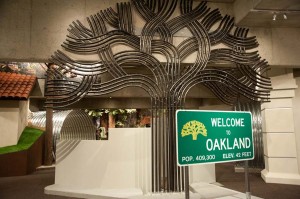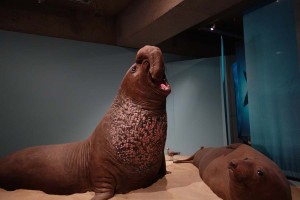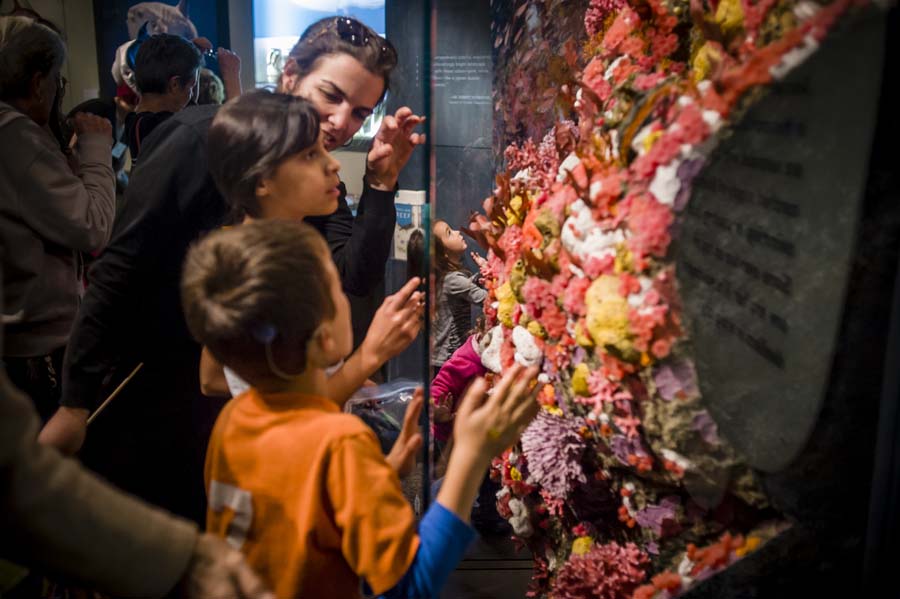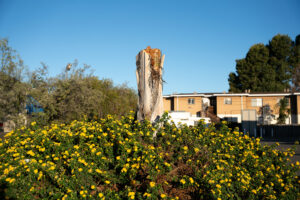On May 31, the Oakland Museum of California will throw open the doors to a completely overhauled natural sciences gallery, the world’s largest museum exhibit exclusively focused on California’s habitats and wildlife.
“What I think people will find most interesting about the gallery is just how incredibly diverse it is,” says Douglas Long, the museum’s senior curator of natural sciences. “California ranks among the world’s top 10 biodiversity hotspots. We are comparable to other places like rain forests and African savannahs.”
This is the first complete remodel of the gallery since the museum opened in 1968. Where the old gallery covered a somewhat idealized coast-alpine transect across the state, the new exhibits focus on seven actual places—from the deep ocean of the Cordell Bank National Marine Sanctuary to the urban wilds of Oakland to the heights of Mount Shasta and Yosemite.

“I don’t want this gallery to be the endpoint,” says Long. “We want people to see this and say, ‘I want to go see that animal.’ Having the gallery be about California, it’s much easier to just take a bus ride up into the redwoods, or down to the mudflats at low tide. Whatever it is, we want people to use the gallery as a portal to the natural world.”
When I spoke with Long in mid-May, his team had counted 1,500 species of plants, animals, and fungi throughout the gallery’s 25,000 square feet. He thought they’d get another hundred or two in by opening day.
Many of those species are shown with real specimens, often in dioramas reused from the original gallery installation. Most of those specimens, old and new, have passed through the hands of Alicia Goode, the only taxidermist working on the project. During member previews over the past six months, Goode has been preparing specimens live on the gallery floor, attracting big crowds and lots of questions.
“People react in a way you wouldn’t expect them to,” says Goode. “You might think that it’s too graphic, but I have honestly never had a negative reaction. A lot of stuff that goes on in museums you just never get to see, so people have a blast seeing what we do.”
[slideshow]
Human Presence
The gallery is not just about wildlife and native plants. People are also a major part of the story, for better and worse. “The history of California is the history of exploitation of our natural resources,” says Long. “From gold to lumber, it’s about exploitation. But also we want to show that we can be part of the solution. People can plant native plants, they can get involved in citizen science programs, they can do restoration, they can help elect the right politicians.”
In the Oakland section of the gallery, one exhibit includes stories from people who lived through the devastating 1991 Oakland Hills firestorm, and another displays preserved roadkill and a real truck cab, a reminder that our everyday activities have a big impact as well.
Such threats are counterbalanced with stories like those from Friends of Sausal Creek, a grassroots restoration group that’s been doing innovative creek restoration and community work for years along Sausal Creek.
One part of the gallery features 10 short videos about the group’s work. Kimra McAfee, the nonprofit’s executive director, says she hopes the videos will inspire museum visitors to get involved in restoration projects, whether on Sausal Creek or elsewhere. “We wanted to show what we do and also make it translatable,” she says. “You don’t have to go to Sausal Creek to do these amazing things. You live in a watershed and you can do it there.”
But she also hopes to reach people who do live in the Sausal Creek watershed but aren’t yet plugged in to restoration efforts: “The Oakland Museum brings in so many people from throughout Oakland, so it’s exciting to think who will be touched by these videos. We see this as a larger partnership: How can we get kids on our programs to go to the museum, and how can kids at the museum come to our programs?”
New Context for Original Dioramas
To fans of the original gallery, Long says, “The vast majority of their old favorites will be there, in a new context.”
When it comes to his own favorite, he has a hard time choosing but finally settles on an offbeat case called “Leftovers,” showing deep-ocean hagfish and other scavengers feeding. “It’s a world where there’s very little food and this shows an incident where a dead fish falls and all these organisms start moving in,” says Long. “The deep ocean that hagfish represent and the bizarreness that is California, that’s my thing.”

At first you’ll have a hard time finding that case in the gallery’s Cordell Bank section. The gallery redesign team turned it into a deep-sea exploration simulator, so the case itself is hidden in a closet, and visitors use controls and video display to explore it remotely, just like scientists using remote-control submersibles. “You don’t see the diorama, but you get the experience of exploring as if you were a marine biologist investigating this scene.”
Beyond interactives like that, the gallery will closely integrate art and history elements from the museum’s other two galleries, California art and history, which have also been overhauled in the last several years.
“We have paintings of Oakland when it was an oak woodland,” says Long, “and we have these amazing paintings of Yosemite that show that Yosemite has changed very little. We have so many diverse habitats and views and vistas. We have art as both a record of habitat change and as an expression of people’s love of the environment. We’re really bringing everything we experimented with in the other two galleries up to the next level.”
The museum will hold a series of special opening events from May 31 to June 2. Find out more at museumca.org/natural-sciences.





